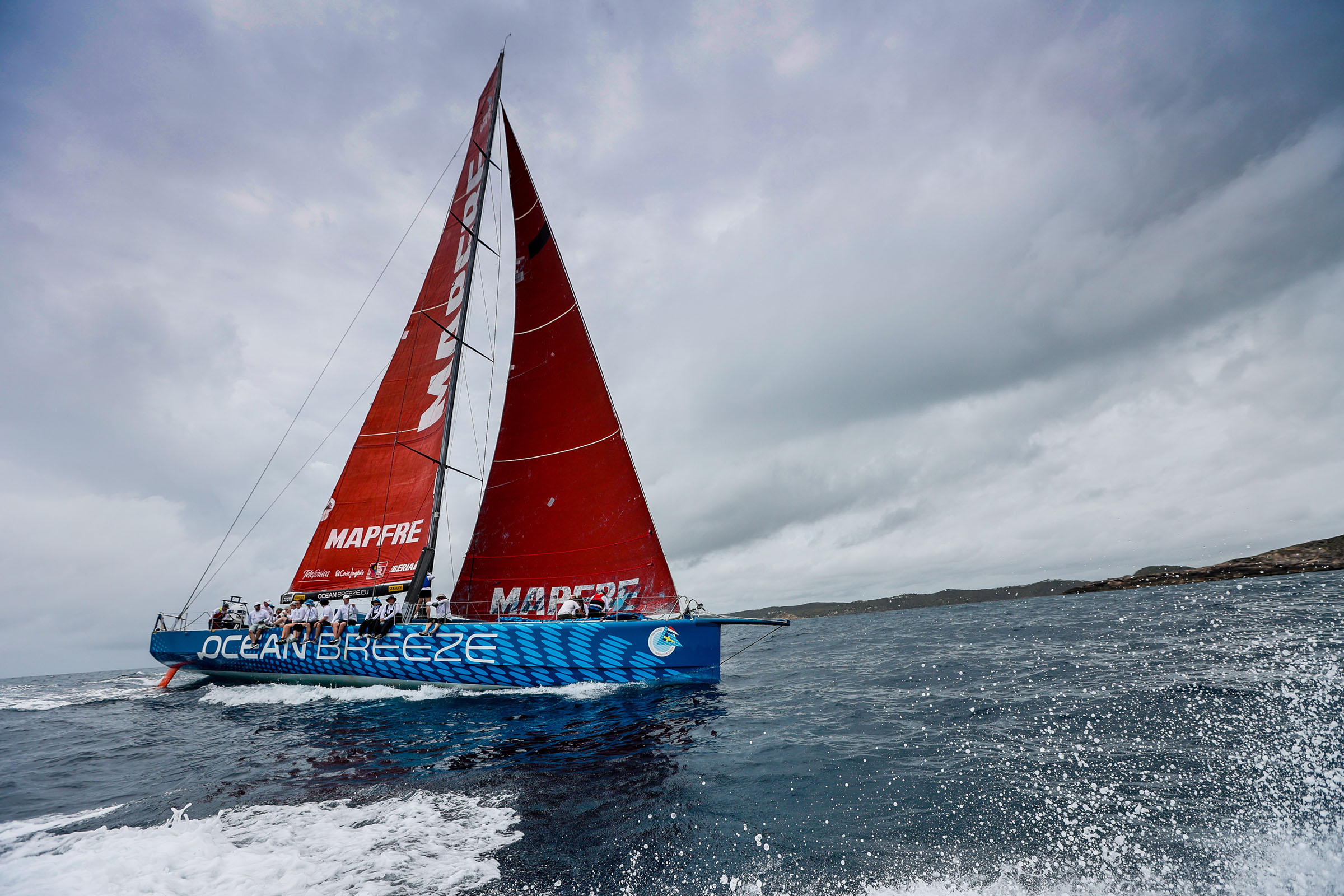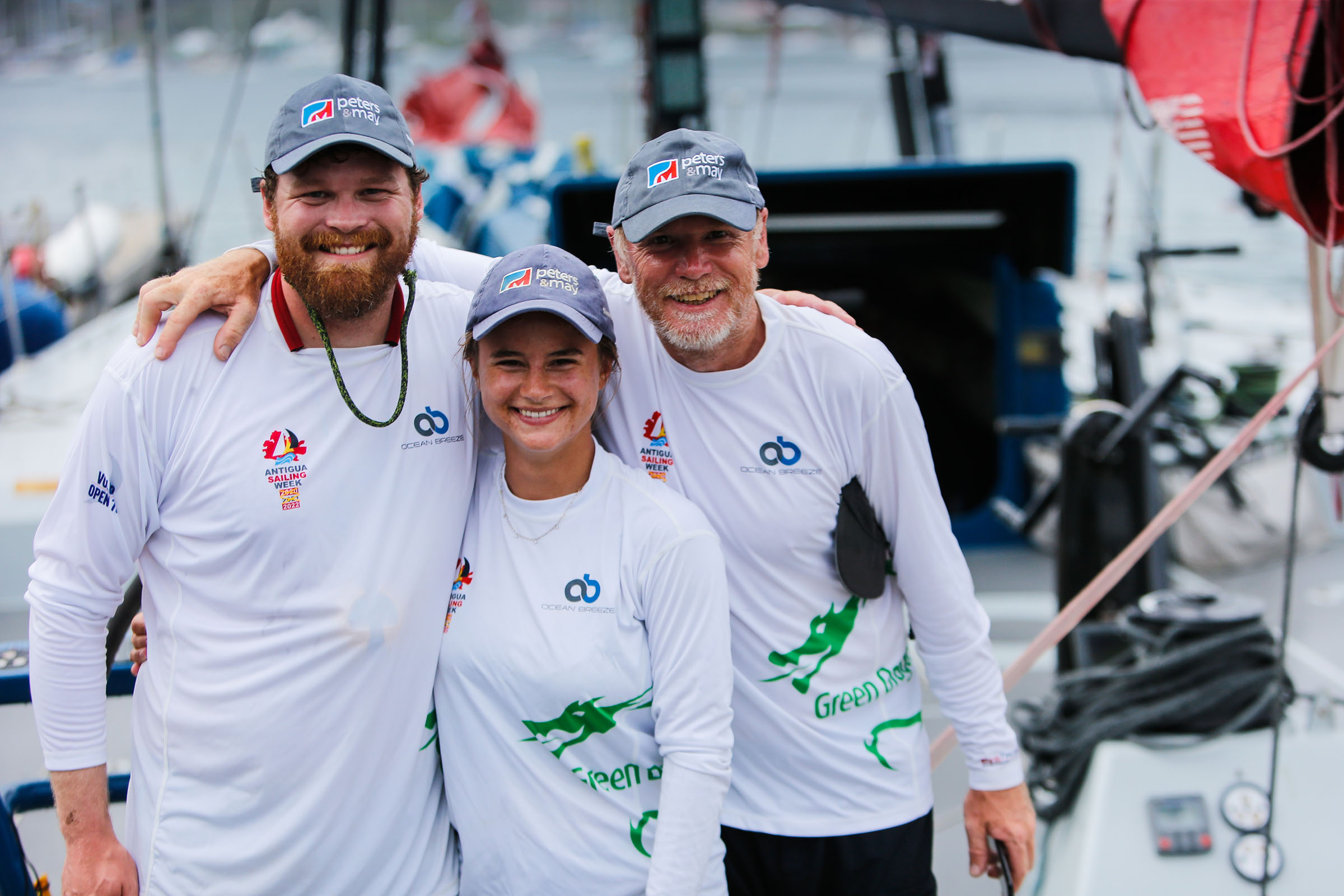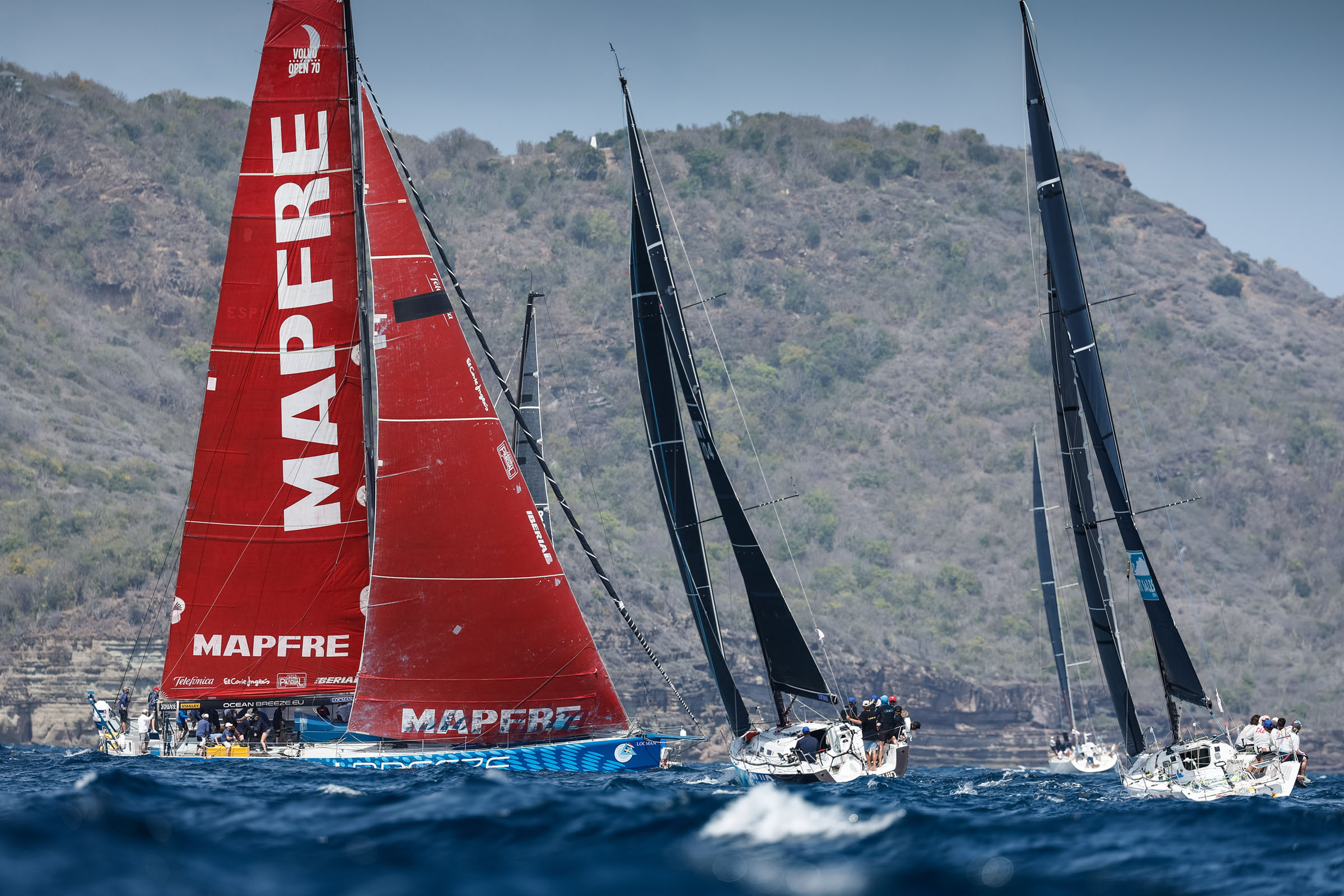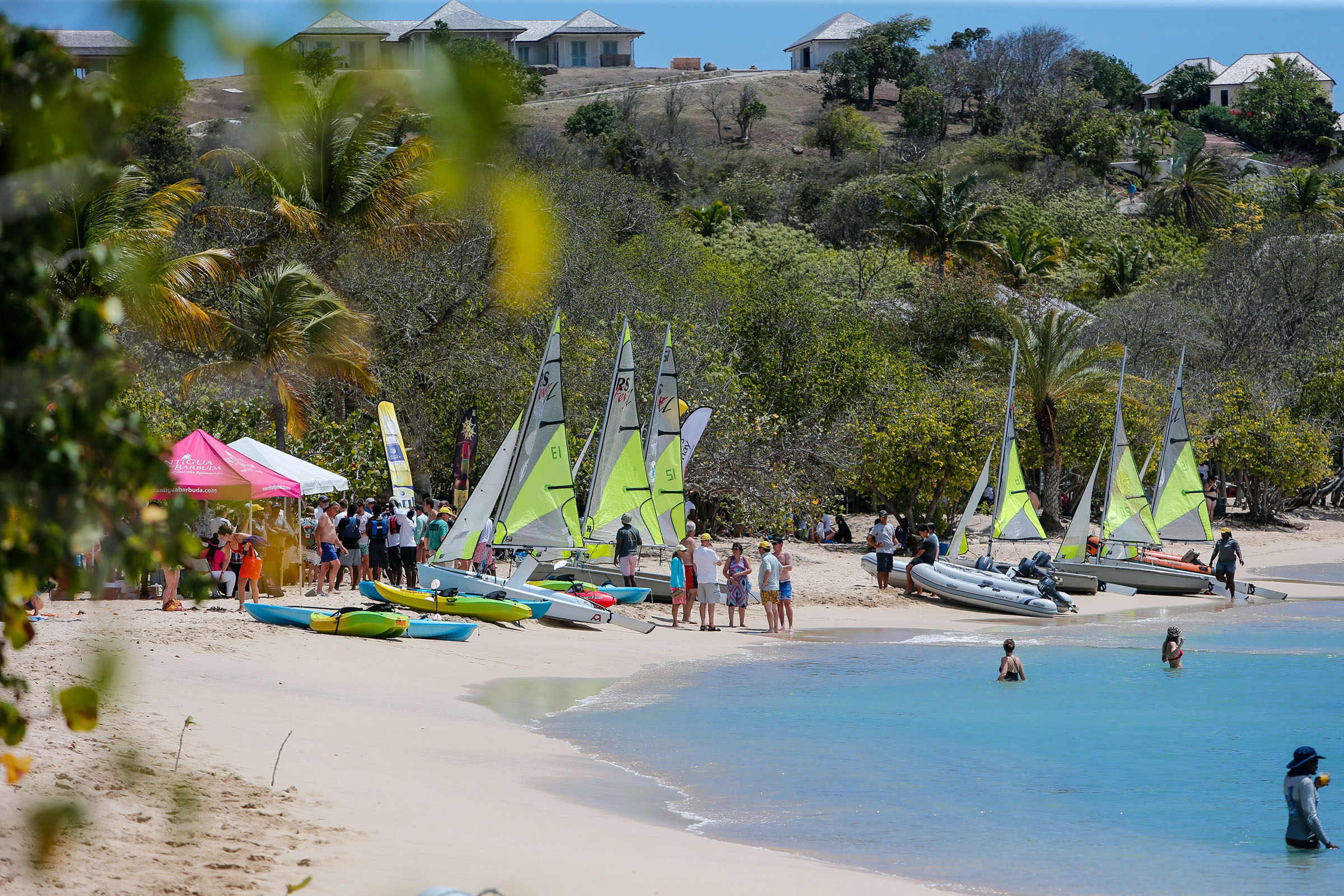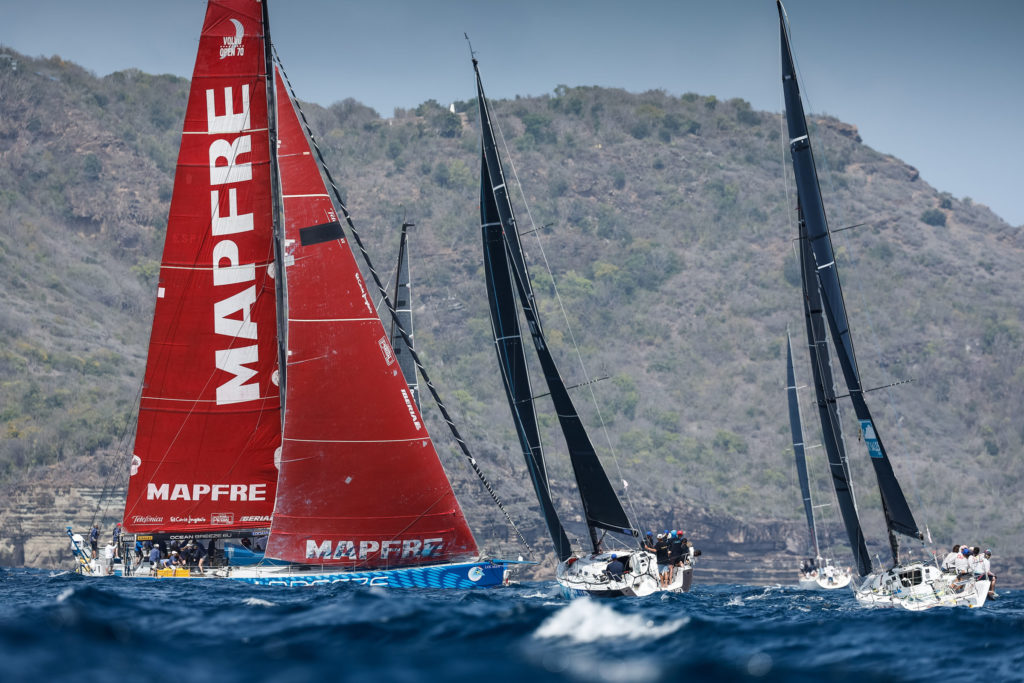
It was way back in 2019 that I first heard the siren call of the Caribbean, as myself and my fellow Smoke racing program members began bandying about the idea of racing a charter boat in this most tropical, yet taxing, of settings.
To a Northwest-based sailing team, it was immediately an intriguing proposition, and one that soon took shape in the charter of a Volvo Ocean 70 for none other than Antigua Sailing Week. Steve Travis, owner of Seattle-based TP52 sailboat Smoke, has always made a point to take his racing program on the road. Over the years, previous trips have included races in Cowes in England, Sardinia in Italy, Cork in Ireland, and St. Barth’s in the Caribbean. But nothing quite as ambitious as a wave crushing offshore machine like the Volvo Ocean 70 had come along—and the thought of racing her was thrilling. (So much so, in fact, that when Travis asked what I thought of the entire idea, I believe my response was a resounding “#$@^ YEAH!”)
The number of crew started inching upwards, as we pulled from our normal racing team and added in some longtime friends from the Northwest sailing community. Flights were booked, vacation scheduled, and things were all looking good for us to have an amazing time at the 2020 Antigua Sailing Week. Unfortunately, as the world made its way into March 2020, our crew and the entire planet realized that no one was going anywhere for quite a long time. The race was cancelled, the dream sat on the sidelines.
But after nearly two years of uncertainty and more hand sanitizer than anyone has time to measure, things began to shift. By late 2021, there was a light at the end of the tunnel, and somehow the cards began to fall back into place for Antigua Sailing Week to return to the calendar and run from April 30 to May 6 in 2022. With a fair bit of skepticism if whether it would happen at all, the crew rebooked flights, packed bags, and before we knew it, we were on a flight headed south for the first time in a long time.
The island of Antigua, known as Wadadli to the native Caribbean people, is situated in the northeastern Caribbean and is a long-standing centerpiece in the world sailing community. A strong British influence on the island combined with the historic Royal Navy shipyard in English Harbor made the island a haven for sailors seeking a place to refit and repair during the early trips to the Americas. This culture of seamanship and craftsman has continued, resulting in the island being the winter home to many of the world’s most iconic sailing yachts.
Being such a hub of sailing in the Caribbean, it’s little wonder then that 2022 marked the 53rd running of the Antigua Sailing Week. For over half a century, the premier racing event has attracted top-level competitive racing programs and regatta sailors; more than a hundred yachts ranging from 24 feet to well over one hundred feet long participate in the Caribbean winter regatta. The fleets include a wide range of competitors with participants in everything from bare boat charter fleets—where crews draw their boat number out of a hat at the beginning of the regattas and stay on the boats—to full grand prix programs with dialed-in boats and crisp carbon fiber sails. There is something for everyone.
From the race management side of things, keeping this circus going and working smoothly takes a herculean level of logistics and support, both on and off the water.
The sailing instructions included nearly 50 different course options utilizing 17 preset marks spread between two separate racing areas along the southern shores of the island. The whole regatta was separated into two fleets of boats, with the larger, faster boats grouped together and the bare boat charter fleets comprising the other group, that alternated between the two arenas. Every day wrapped up with music and awards at the Antigua Yacht Club, and the festivities carried on well into the evening for some. Four hard days of racing were divided by a lay day mid-week to give crews the opportunity to rest up, reset, and repair the boats and themselves. Given that many people travel very long distances to attend the regatta, the long week format gave the whole thing an endurance-like feel, and being able to continue to improve throughout the week was critical.
Our boat for the week, Ocean Breeze, is legendary in her own right. Originally built as Telafonica Blue, she competed in the 2008-2009 Volvo Ocean Race and then went around the world again in the 2011-2012 race under the name Sanya. She is an absolute monster of a wind-powered machine; to simply call her a “sailboat” is doing a disservice. The mast measures in over one hundred feet off the water and downwind, the sail plan works out to be an astounding 7,260 square feet. This is paired with the canting keel mechanism that pivots the 10,000-pound bulb forty degrees to windward, bringing the righting moment to an eyewatering level. All of this together with hydraulic adjustments, running backstays, and an interlinking winch system makes a TP52 look as simple as a Laser, Ocean Breeze is truly a wonder of engineering to sail.
While the boat itself was impressive, it was the job of the owner and boat captain Johannnes Schwarz, along with his first mate Tabea Herbst, to teach us how to get the thing around the racecourse. That was somewhat of a monumental task with only two days of practice.
Things shook out to Schwarz working with the afterguard and coaching the trimmers through the maneuvers. Herbst was responsible for running the pit and managing all the hoisting and dropping of the sails. This is no easy task considering everything is on locking halyards supporting top-down furling spinnakers—with 3-to-1-ratio tack line all coordinating around the six grinders turning the correct winch in the right gear at the right time with some of those winches turning the opposite direction.
The coordination and orchestration of the maneuvers was astronomically intense both physically and mentally and absolutely pushed our team to a new level when it came to communication and timing.
Everything on the boat had to be done as a process, with one step needing to be completed before the next one started. While this is not a major issue when you are scheduling your sail changes on a calendar during an around the world race, in short course buoy racing it added a level of unimaginable complexity.
For example, in order to tack the boat, the call would go out 30 seconds before the tack to drop the weather dagger board into the water, which involved releasing the halyard that holds it up, followed by the bow team seating the board into the cassette. As that was happening, the new leeward runner was being brought on and pre-loaded, next as the boat begins to turn, the keel is swung through the tack to the new high side as the sails pass over. Once completed, the weather dagger board is hoisted out of the water using the pedestal-driven weather primary winch, and finally, the traveler is brought to weather on the same winch. After all of that, it is probably time to tack again. All the while, we were dodging and weaving, short tacking the beach to get out of the current, and avoiding the traffic of the smaller fleets that we were constantly working our way through, and that was just the upwind.
It was not until halfway through the regatta that we began to really feel like we could measure up against our competition, the Volvo 65 Ambersail, crewed by a great group of sailors from Lithuania. They were a very well sailed program with a lot of experience on the boat and were a real challenge to keep pace with, especially in the early days of the regatta. Although the boats were slightly different in performance and design, we quickly learned that if we wanted to beat them on the water, we needed to be flawless in our maneuvers and clean in our tactics and strategy. Thankfully, our team learned quickly and by the end of the regatta we found ourselves battling at the front with them, only missing the class win for the week by two points after four intense days of racing.
At the end of the week, we all looked at each other; bruised, tired, but not broken and far from beaten, having finished up the final race nearly three minutes ahead of our Lithuanian rivals on the water. We felt fantastic about how far we had come and how hard we pushed to get there. I can’t even begin to touch on all the people who worked to make this incredible event possible, and the amazing team that I was lucky enough to sail with at Antigua Sailing Week. There is no way I would be able to tell all the stories and share all the memories we made in the space here, and it is hard to believe that so much came out of one single week of sailing.
And in the end that is what the sport is about: Trophies come and go, boats come and go, but the friendships and memories that we build along the way is really the whole reason for doing it.
>> The 54th edition of Antigua Sailing Week will take place April 29-May 5, 2023. For full regatta details, visit: sailingweek.com.
